Kidney:
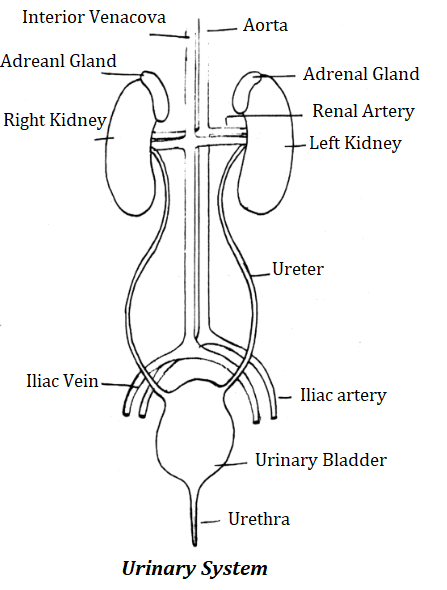
The kidney is one of the main excretory organs of the body. By secreting urine the kidney serves as the outstanding guardian of the milieu interieur. The main functions of the kidney in the maintenance of body homeostasis are listed below.
(1) Maintenance of proper osmotic concentrations.
(2) Maintenance of blood volume.
(3) Maintenance of ion concentration.
(4) Removal of nitrogenous end products of protein metabolism primarily urea, creatinine, and ammonia.
(5) Removal of foreign substances and /or their metabolic end products.
Thus, kidneys control the concentration of most of the constituents of body fluids. In the case of birds, the primary end product of protein metabolism is uric acid instead of urea. So, the major excretory product through urine in the case of birds is uric acid.
Briefly, the kidney forms urine in the following way. Endowed with a relatively huge blood supply, the renal glomeruli filter about 200 liters per 24 hours of protein-free fluid from the blood in a human being (i.e. 50-60 times the plasma volume). Thus filtrate, which contains the soluble non-protein components of the plasma, is submitted to extensive reabsorption by the renal tubules. The relative control of the reabsorption process by the kidney is the key mechanism by which the kidney is able to maintain the composition of the milieu interieur.
The kidney also releases several hormones like renin, erythropoietin, and prostaglandins, which have the capacity to influence cells and alter their physiological processes.
Functional Anatomy of the Kidney:
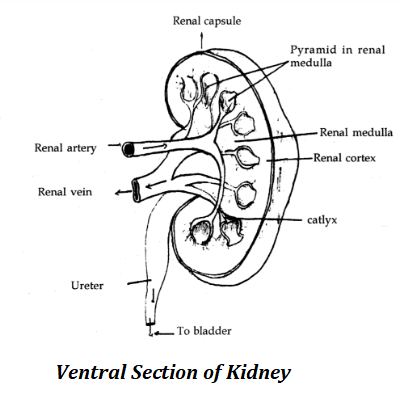
The kidneys are a pair of bean-shaped organs in the abdominal cavity. The longitudinal section of the kidney shows the outer darker region called the cortex and the inner paler region called the medulla. The kidney is composed of basic units called nephrons. There are about 1,000,000 nephrons in each human kidney.
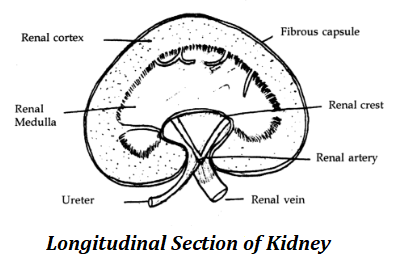
The nephron is composed of a “Malpighian body or Bowman’s Capsule”. The Bowman’s capsule consists of a single layer of epithelial cells surrounded by a basement membrane. A small artery enters into each Bowman’s capsule or Malphighian body, where it splits up into a bundle or tuft of capillaries, the glomerulus. The first step in urine formation is the passage of fluid from the glomeruli into the capsule.
It is through the walls of the glomerular capillaries that fluid is forced out by the blood pressure. The capsule is continued into a long U-shaped tube. The part immediately following it is called the proximal tubule. Thus the glomerular filtrate enters from the capsule to the tubule which leads from the Malphighian body. Within the tubule, the glomeruli filtrate is modified both by reabsorption and by tubular secretion to form the final urine.
In the proximal part of the tubule, many solutes such as salts and glucose as well as water are extensively reabsorbed.
The proximal tubule is continued into the distal tubule through a loop called the loop of Henle. The Henle loop dips down towards the medulla while the Bowman’s capsule and the proximal tubule lie in the cortex region. The process of changing the tubule fluid into urine is continued in the distal tubule. The loop is the particular structure in the nephron that is responsible for the formation of urine which is more concentrated than blood plasma.
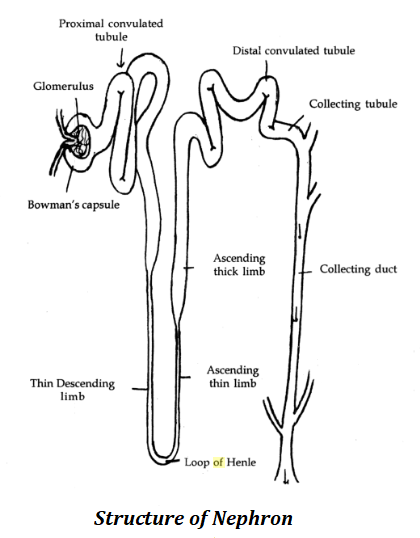
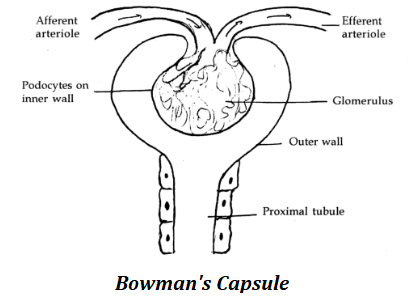
Two basic processes required for the formation of urine are ultrafiltration and active transport. In ultrafiltration, pressure forces a fluid through a semipermeable membrane that withholds protein and similar large molecular solutes to pass. Active transport is the movement of a solute against its electrochemical gradient by processes requiring the expenditure of metabolic energy.
The collecting tubule passes from the cortex back downwards through the medulla, paralleling the loop of Henle. Then it empties into the pelvis of the kidney.

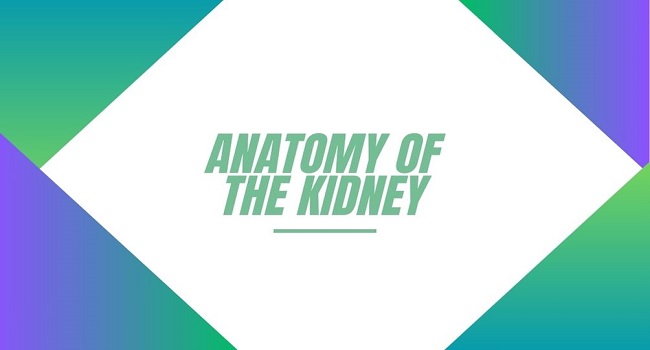
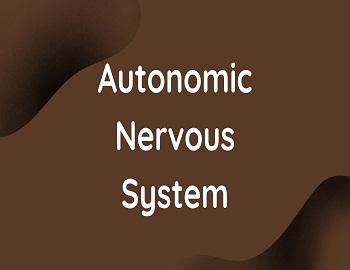




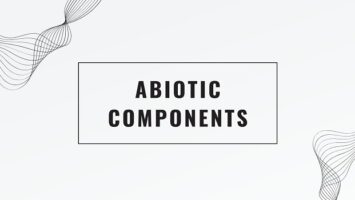
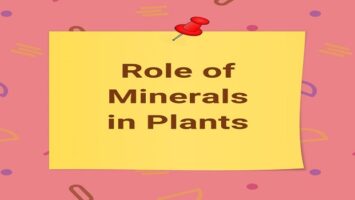
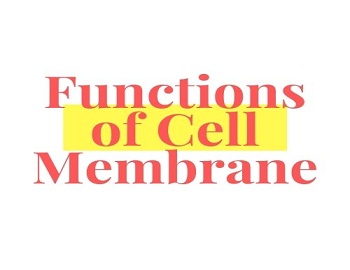
Comments (No)